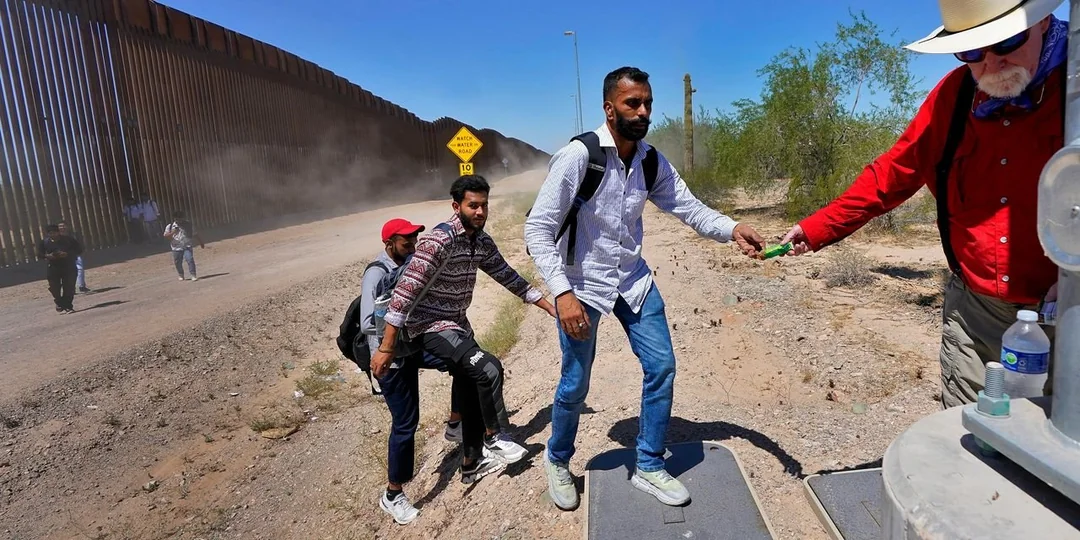
In recent years, there has been an increase in young Indians attempting to enter the United States illegally. This trend has raised concerns and questions about the underlying factors driving this migration. The challenges faced by these individuals, and the implications for both the migrants and the U.S. immigration system.
The Surge in Illegal Migration
Dramatic Increase in Numbers
According to data from U.S. Customs and Border Protection, the number of undocumented Indian migrants entering the U.S. has surged dramatically. From October 2022 to September 2023, nearly 97,000 Indians reached the borders. This makes a fivefold increase compared to previous years. This spike is part of a broader trend of rising global migration post-COVID-19. However, the specific increase among Indian nationals is particularly noteworthy.
Factors Driving Migration
Several key factors contribute to this influx of young Indian migrants:

Political and Religious Oppression
Many migrants are fleeing from the oppressive conditions faced by minority communities in India, particularly under the government of Prime Minister Narendra Modi. Reports indicate that Sikhs, Muslims, and Christians have experienced increased persecution, prompting many to seek asylum in the U.S.
Economic Instability
The deregulation of India’s agricultural sector in 2020 led to widespread protests and economic uncertainty for farmers, particularly in Punjab. This instability has created a sense of hopelessness among many, driving them to seek better opportunities abroad.
Visa Backlogs
The lengthy and complicated U.S. visa process has left many potential immigrants with little choice but to pursue illegal entry. The backlog in processing visas has created a sense of urgency among those wishing to reunite with family members already in the U.S.
Influence of Smugglers
Smuggling networks have become increasingly sophisticated, offering perilous routes to the U.S. These networks exploit the desperation of migrants, often leading them through multiple countries before reaching the U.S. border.
The Journey to the U.S.
A Treacherous Path
The journey from India to the U.S. is fraught with danger. Many migrants travel through various countries, including the Middle East, Europe, and South America, before arriving at the U.S. border. This multi-leg journey can take months and involves significant risks, including exploitation by smugglers and exposure to harsh conditions.
Arrival at the Border
Upon reaching the U.S., migrants often encounter an overwhelmed immigration system. The processes at the Southern border, historically designed for single male workers from Mexico, are ill-equipped to handle the diverse and growing number of asylum-seekers from various countries, including India. Many migrants are issued notices to appear before immigration judges, but the backlog in the courts can lead to long delays in their cases being heard.
The Impact on the Indian Diaspora

Community Reactions
The increasing number of undocumented Indian migrants has sparked discussions within the Indian American community. While many recognize the challenges faced by these migrants, there are concerns about how this influx might affect the perception of Indian immigrants as a whole. Some community members worry that the rise in illegal entries could tarnish the reputation of legal immigrants, who are often viewed as “model” citizens.
Future Implications
As the situation evolves, it remains to be seen how the U.S. will respond to this growing wave of undocumented migrants. The complexities of international relations, with India, and the challenges within the U.S. immigration system will play crucial roles in shaping future policies and the experiences of these migrants.
Conclusion
The waves of young Indians entering the U.S. illegally reflect a complex interplay of political, economic, and social factors. As these individuals seek better lives and opportunities, it is essential to understand their motivations and the challenges they face. Addressing these issues requires a nuanced approach that considers the realities of migration and the need for comprehensive immigration reform.














